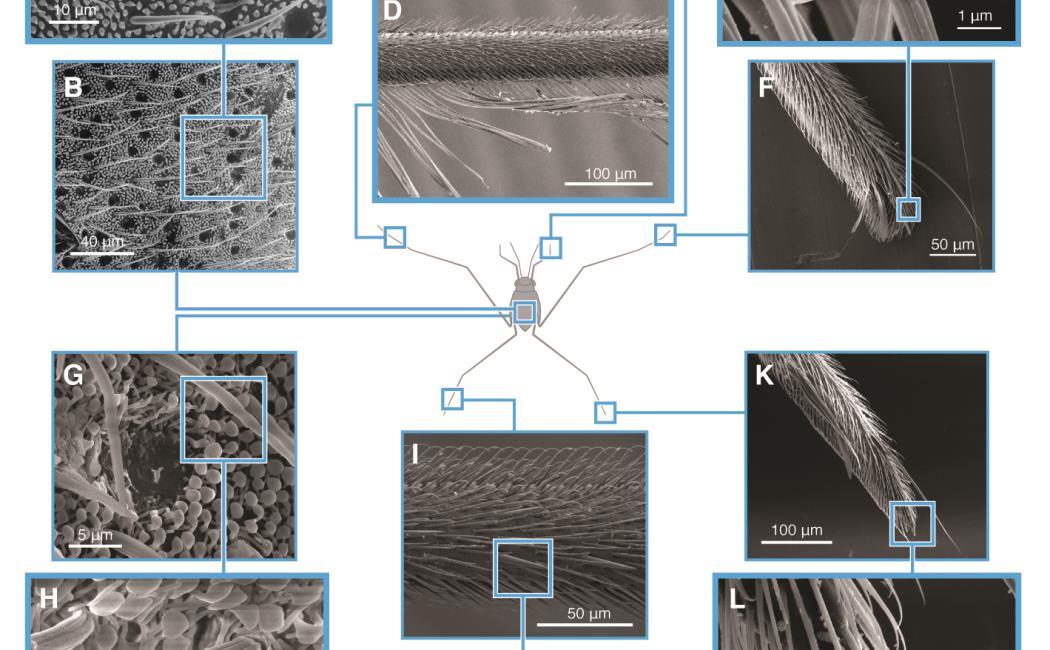
10 May, 2020
iLab members and collaborators published an interdisciplinary study on Halobates in Scientific Reports.
Title: Superhydrophobicity and size reduction enabled Halobates (Insecta: Heteroptera, Gerridae) to colonize the open ocean
by Gauri A. Mahadik, Jose F. Hernández Sánchez, Sankara Arunachalam, Adair Gallo Junior, Lanna Cheng, Andreia S. Farinha, Sigurdur T. Thoroddsen, Himanshu Mishra, Carlos M. Duarte
Abstract:
Despite the remarkable evolutionary success of insects at colonizing every conceivable terrestrial and aquatic habitat, only five Halobates (Heteroptera: Gerridae) species (~0.0001% of all known insect species) have succeeded at colonizing the open ocean – the largest biome on Earth. This remarkable evolutionary achievement likely required unique adaptations for them to survive and thrive in the challenging oceanic environment. For the first time, we explore the morphology and behavior of an open-ocean Halobates germanus and a related coastal species H. hayanus to understand mechanisms of these adaptations. We provide direct experimental evidence based on high-speed videos which reveal that Halobates exploit their specialized and self-groomed body hair to achieve extreme water repellence, which facilitates rapid skating and plastron respiration under water. Moreover, the grooming behavior and presence of cuticular wax aids in the maintenance of superhydrophobicity. Further, reductions of their body mass and size enable them to achieve impressive accelerations (~400 ms−2) and reaction times (~12 ms) to escape approaching predators or environmental threats and are crucial to their survival under harsh marine conditions. These findings might also inspire rational strategies for developing liquid-repellent surfaces for drag reduction, water desalination, and preventing bio-fouling.
(This figure was created by Xavier Pita, Senior Scientific Illustrator, KAUST).